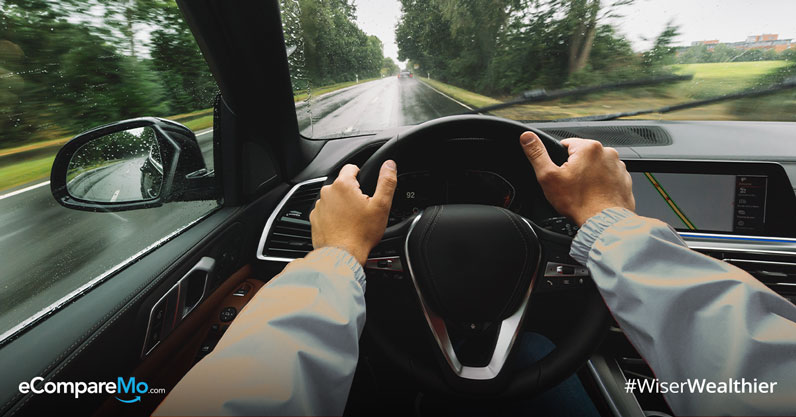7 Things To Check Before You Start Driving In The Rain
3 min readShower your car with love with these top maintenance tips for the rainy season.Â

Driving in the rain, as opposed to traversing dry roads, defies most laws of physics. Tires lose traction by as much as 14% when on wet roads, affecting a car’s momentum and centrifugal force. Suffice to say, one’s visibility is limited too.
While the rain is still scarce and strong typhoons have yet to enter the Philippines, take your weekends off as a chance to work on much-needed car repairs to keep your car in tip-top shape ahead of the rainy season.
Since driving on wet roads poses more challenge than normal, you’ve got to make sure your car is free from possible breakdown and mechanical failure leading to untoward incidences. Here’s a checklist of car maintenance routines and driving safety tips for the rainy season.
1. Brakes
Under the direst of road conditions, your car’s brakes are the one thing that will save your life. It’s always good to have them checked, rainy season or not. If not at an interval of every 20,000 kilometers or so, check for danger signs. “Make sure that the brake pads still have enough friction material and the brake discs’ thickness still complies with the manufacturer’s specs,†advises online car selling platform Carmudi Philippines. “Your brake fluid should still have that golden color; and if it looks like fish sauce, it’s time to replace it.â€
(See Related Topic: 7 Safe Driving Tips You’ve Probably Never Heard Of)
2. Lights
Heavy to torrential rain can make road visibility poor, and any impediment to the driver can compromise the safety of everyone on the road. If your headlights emit a faint light, replace the bulbs immediately. “While your headlights are out, check for the bulb condition and replace them with rainbow/gold/yellow-colored bulbs which offer greater contrast and, therefore, visibility and vision in fog and during increment weather,†writes Botchi Santos on the Philippine Daily Inquirer.
3. Body
Since rainwater is acidic, it can corrode your car’s body and speed up deterioration. This could lead to more problems and even bigger expenses. Ferman Lao, Top Gear Philippines’ technical editor, advises: “Give your car one to three coats of wax to protect the paint from various elements. Sun, wind, rain, tree sap and bird droppings will all take a turn at chipping away your paint. Waxing helps minimize the effects on the paint and keeps it shiny, requiring only a rinsing of built-up dust and dirt.â€
4. Wheel alignment
It is important to have your wheels aligned at least once a year. However, keeping your wheels aligned before the rainy season will help you avoid road accidents due to slippery roads. “Misaligned wheels and tires make the vehicle difficult to control especially when the roads are slippery, decrease vehicle stability at high speeds and can impair braking performance, lengthening overall braking distance,†Santos notes.
5. Battery
Frequently using your wipers and headlights, as well as corroded battery poles due to humidity and moisture, can cause your batteries to fail. These events occur more frequently during rainy season. To remove accumulating rust from the battery poles, wash them with mild soap and water and toothbrush, leave them to dry, and then apply dielectric grease. Have your battery performance checked too for current output and charging capacity.
(See Also:Â 5 Habits That Are Just As Dangerous As Using Your Phone While Driving)
6. Wipers
Wiper blades become soft and brittle due to constant exposure to rain. For safe driving in the rain, Toyota Philippines tips that you regularly clean your windshield. Do this by washing the rubber squeegees of the wipers to keep them free from dirt or oil. “Also, if you notice that your wipers have begun squeaking, smearing, or streaking against the windshield, then it’s time that you have it replaced.â€
7. Tires
Taking care of your car tires should be all-year round, but the harsh weather conditions brought by the seasons should mandate you to be extra vigilant in your tires’ tread depths for better control even on wet surfaces. Tire maker Bridgestone, via an article on The Philippine Star, share this tip: “The tread on your tires should never fall below 1.6 mm in depth. If you regularly drive on slick, wet surfaces, you’d be even better off with twice that much.â€
